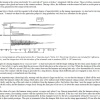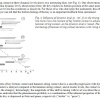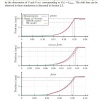Topic: Latence et vélocité parfaite... le graal...
Bonjour à tous,
Je pense que l'obsession de chercher à obtenir la bonne latence et la bonne courbe de vélocité pour le meilleur réalisme possible est un point commun à beaucoup d'utilisateurs de pianoteq.
Et pour cela comprendre ce qui se passe dans un piano réel est important.
Concernant la latence d'un piano Philippe disait ceci dans un post de 2009 :
" It is interesting to see in this lecture https://www.speech.kth.se/music/5_lectu...asure.html
that an acoustic piano has a latency in the range of 20 to 30 ms (staccato forte case), measuring time from the moment when the finger touches the key to when the strings start moving. So this is more or less what one would expect from a digital installation when summing all latencies: keyboard + software + soundcard."
En m'intéressant à cette conférence j'y ai trouvé cette page : https://www.speech.kth.se/music/5_lectu...ybott.html
Il y est dit : "Il s'avère qu'à un certain niveau dynamique, vers le mezzo forte, la touche atteint sa position basse au moment même où le marteau frappe la corde."
Dans un autre document extrêmement intéressant :
https://pastel.archives-ouvertes.fr/pas...3/document
On peut voir à la page 45/159 de ce document un graphique montrant l'enfoncement de la touche à trois vélocité différentes piano, mezzo forte et forte.
La durée de l'enfoncement de la touche est d'environ 140 ms en mezzo-forte. Si comme le dit le premier article cité le marteau frappe la corde en même temps que la touche arrive en fin de course on peut dire que l'on a une latence réelle de 140 ms.
Trouvant cette valeur très éloignée des 30 ms donnés par le premier article je cherche où est l'erreur et où est la vérité.
Je serais très heureux d'avoir un éclaircissement de Philippe sur ce sujet.
Hello everyone,
I think that the obsession to get the right latency and velocity curve for the best realism is a common point for many pianoteq users.
And for that, understanding what happens in a real piano is important.
Concerning the latency of a piano Philippe said this in a post from 2009:
" It is interesting to see in this lecture https://www.speech.kth.se/music/5_lectu...asure.html
that an acoustic piano has a latency in the range of 20 to 30 ms (staccato forte case), measuring time from the moment when the finger touches the key to when the strings start moving. So this is more or less what one would expect from a digital installation when summing all latencies: keyboard + software + soundcard."
While looking into this conference I found this page: https://www.speech.kth.se/music/5_lectu...ybott.html
It says: "It turns out that at a certain dynamic level, around mezzo forte, the fingerboard reaches its low position at the very moment the hammer strikes the string."
In another extremely interesting document:
https://pastel.archives-ouvertes.fr/pas...3/document
Page 45/159 of this document shows a graph showing the depression of the key at three different velocities piano, mezzo forte and forte.
The duration of the key depression is about 140 ms in mezzo-forte. If, as the first quoted article says, the hammer hits the string at the same time as the key reaches the end of its stroke, we can say that we have a real latency of 140 ms.
Finding this value very far from the 30 ms given by the first article I am looking for where the error is and where the truth is.
I would be very happy to have a clarification from Philippe on this subject.
Translated with www.DeepL.com/Translator (free version)


